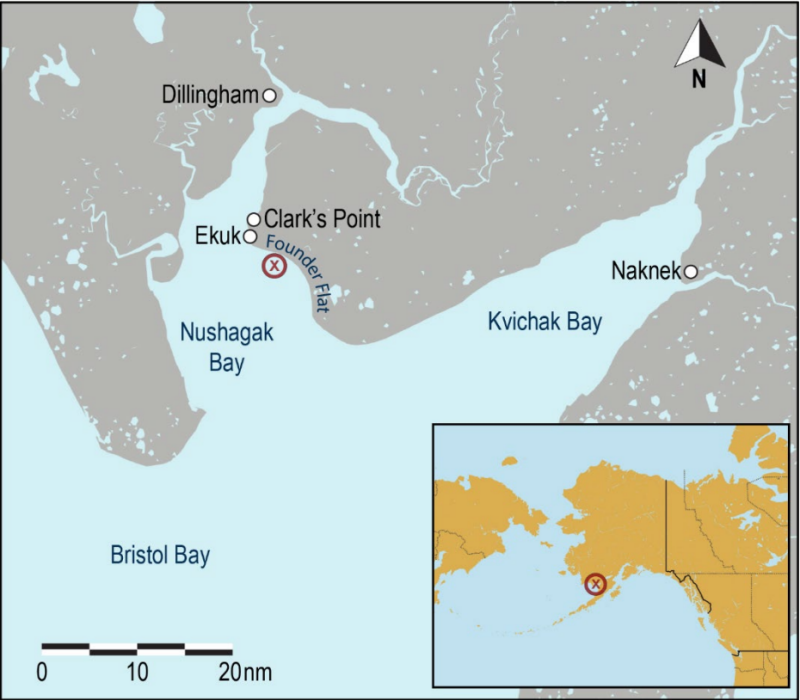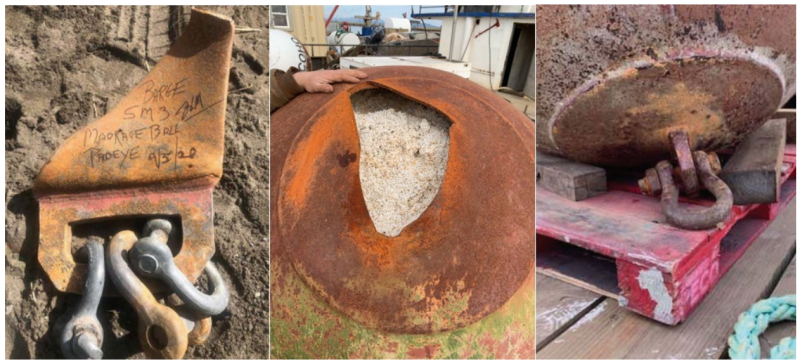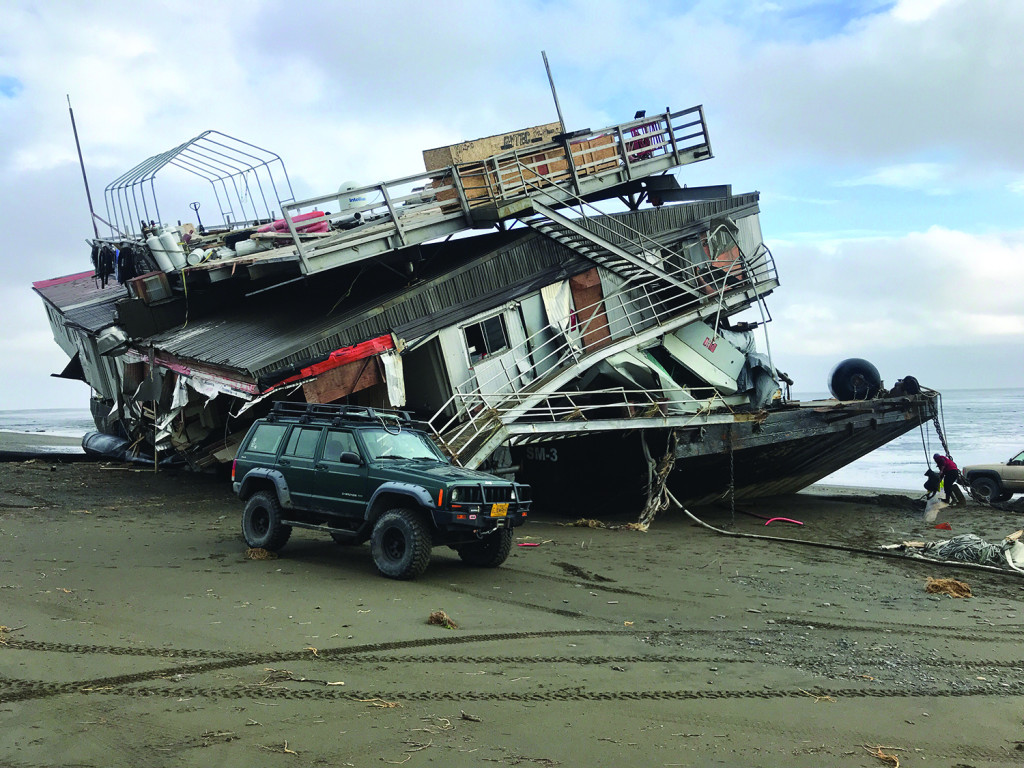A late-summer storm that blew across Alaska’s Bristol Bay region at the end of the salmon season in 2020 sent Northline Seafoods’ fish processing barge SM-3 broadside onto a beach, leaving a three-mile stretch of debris and causing $4.5 million in damages to the vessel. The National Transportation Safety Board has released a report concluding the likely cause of the grounding.
Northline bought the SM-3 in 2017 and had it towed to Sitka in 2018 for an overhaul and conversion that was completed in 2019, bringing much-needed processing and handling capacity to the bay region’s record-breaking salmon runs.
During the season, the SM-3 provided tender services (ice, fuel and water) for the company’s fleet, and also housed a crew for processing and freezing onboard. Northline CEO Pete Glaab led a team of up to 40 crew members, working in 12- to 16-hour shifts to freeze and box whole fish, and transfer pallets of frozen salmon to the holding barge Riverways-11.
After wrapping processing for the Bristol Bay summer salmon season in late-August 2020, the SM-3 was anchored in Nushagak Bay, about five miles south of Ekuk. The barge then had a skeleton crew of six — Glaab, the senior deckhand/IT manager, the operations manager, the fish house manager, and two deckhands — with two crew on the Riverways-11. They were there to prepare the barges for winter layup. The Riverways-11 would be towed to Dillingham, and the SM-3 to Naknek.

On Aug. 25, the first forecasts for a storm with high winds sent the remaining crew into prep mode. Glaab and Northline President Ben Blakey, who was located in Sitka, conferred about what to do with the vessels. They had not ridden well together on the way to the bay from Southeast, but there was not enough towing capacity to get them both to their winter layups safely before the storm.
They decided to send the Riverways-11 to Dillingham, which was closer than SM-3’s winter port in Naknek, about 67 miles away and across an unprotected Kvichak Bay. The Riverways-11 was towed out of the area on Aug. 27. They decided to keep the SM-3 on anchor to ride out the storm in the relative safety of Nushagak Bay.
On Aug. 29, the National Weather Service issued a special weather statement and a storm warning, forecasting strong southeast winds at 40 knots with gusts up to 65 knots in the afternoon, and seas 7 feet building to 14 feet.

The next day, winds increased throughout the day, as forecast. Recorded observations at the airport at Clark’s Point (6 miles from where the barge was anchored) showed sustained winds over 30 knots for about 7 hours, with gusts over 50 knots from 4:30 p.m. to about 10 p.m.
Around 11 p.m., Glaab awoke to “a motion change in the barge,” and he reported that he could tell immediately that the barge was drifting. He alerted the rest of the crew and went out on the stern deck with the IT manager and the operations manager. They saw that the barge was broadside to the wind and waves, drifting toward a beach that was 2 miles east of where they had anchored.
They released an emergency anchor off the stern with 900 feet of steel cable. That was about five minutes after noticing the drift, according to Glaab. The SM-3 swung around so the barge’s stern was facing into the waves, but it continued to drift.
The IT manager reported that the emergency anchor did not “slow down [their] movement towards shore at all,” according to the NTSB.
They released a second emergency anchor and reported feeling it hold for a moment before the vessel continued its movement toward the beach. The crew took shelter in the fish house. Five minutes later, the bow grounded on Flounder Flat, and incoming waves turned the barge starboard to the shore with a list to port.
The crew donned life jackets and weather gear. Water was running over the main deck, and the waves were wracking the barge against the beach. Glaab was concerned about the integrity of the upper decks, but he didn’t think it was safe to evacuate either, so he sent the team to the lower decks to shelter and await high tide in the next couple of hours.
The following morning, about 8 hours after Glaab was awoken by the motion change, the crew evacuated the vessel and were picked up by locals. No injuries were reported.
The grounding left a three-mile debris field on the beach. The barge was assessed in September and salvaged in October. Damage to the vessel was estimated at $4.5 million.

After the grounding, the mooring buoy’s damaged upper round curved cap piece was sent, along with the upper padeye assembly, to a materials testing laboratory. The laboratory reported that the buoy had “functionally failed — a separating crack had formed at the fillet weld of the topside padeye [which connected to the barge via a chain and line], thus allowing the uncontrolled separation of the padeye.” The laboratory found a small fatigue crack at one end of the buoy’s topside padeye.
The NTSB concluded that the grounding was likely the result of a fatigue crack in one of the mooring buoy’s padeye welds.







